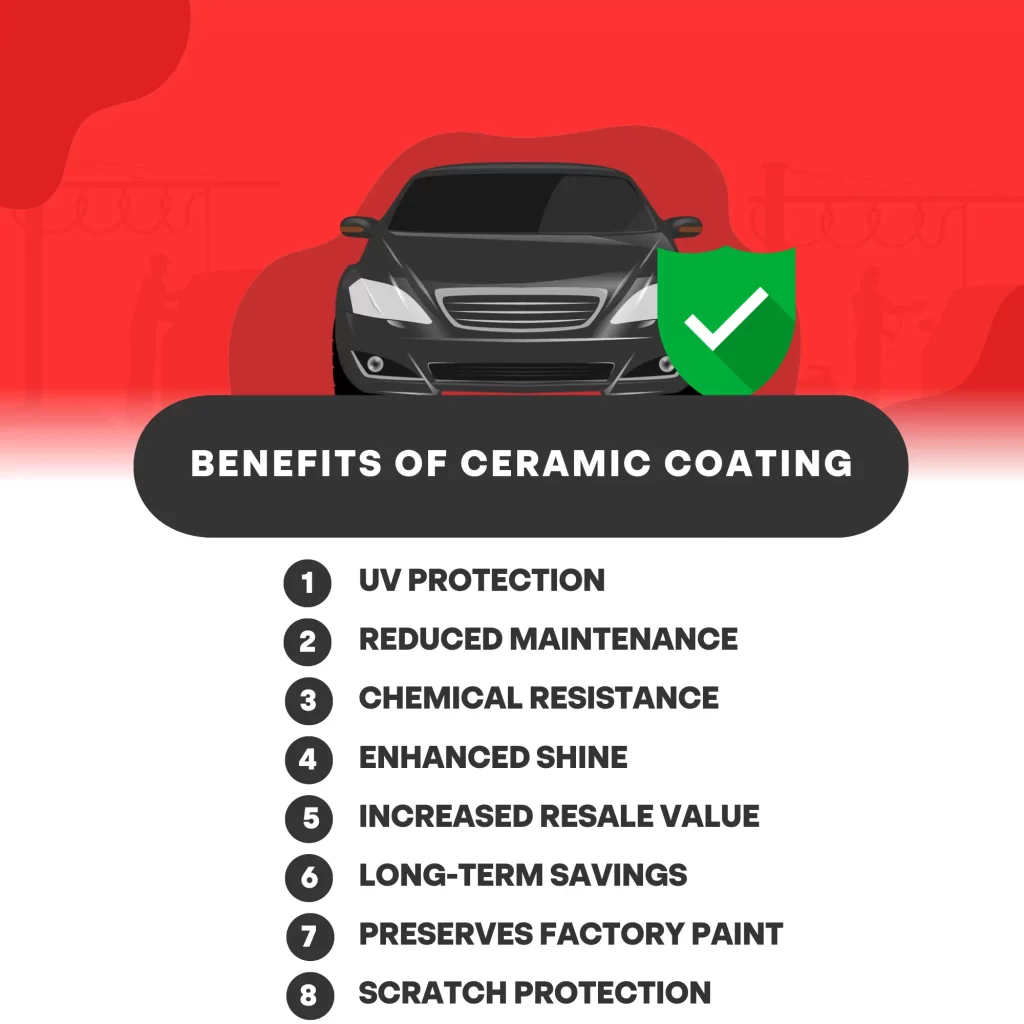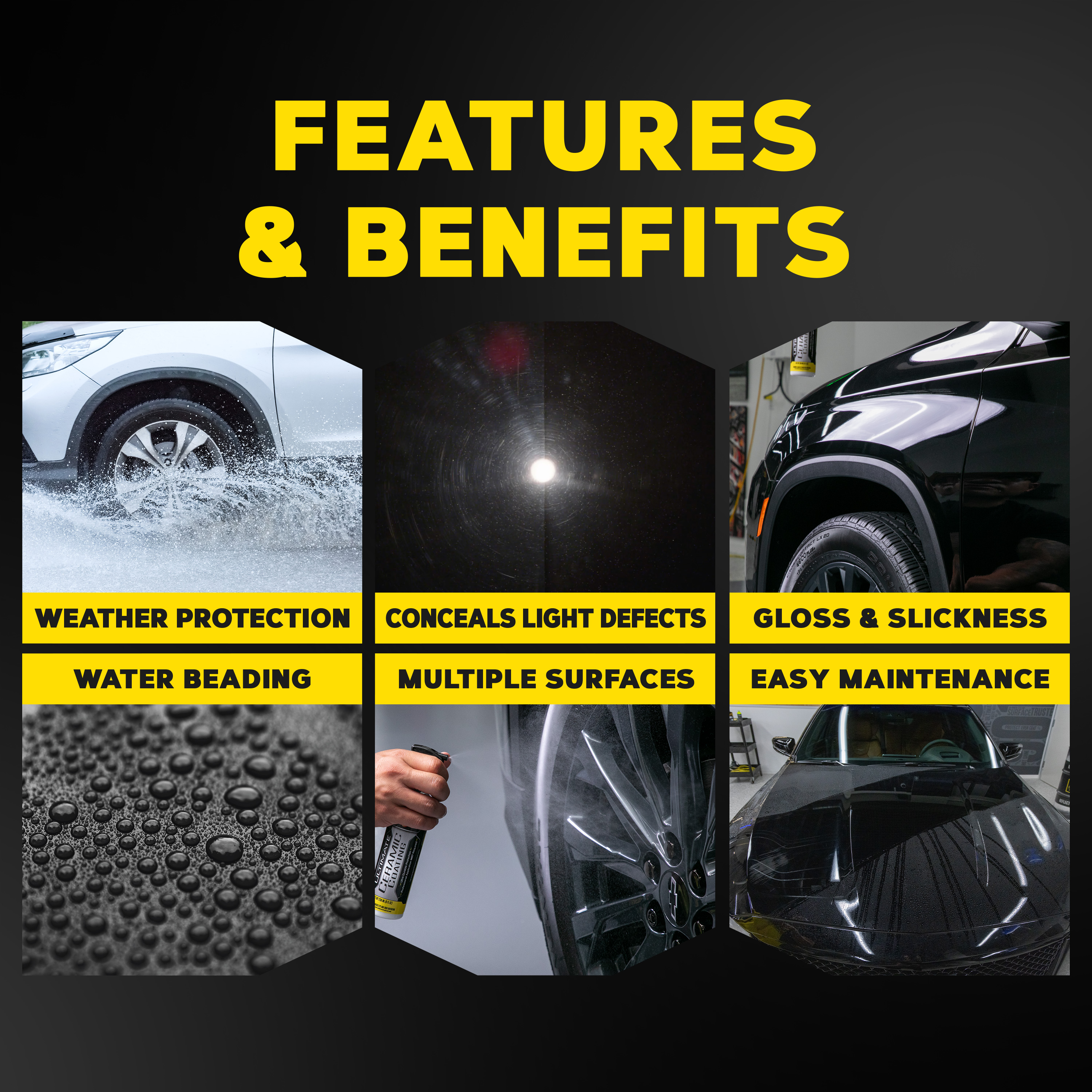Ceramic Coating: The Future of Automotive Surface Protection
Ceramic Coating: The Future of Automotive Surface Protection
Blog Article
Ceramic Coating vs. Standard Wax: Which Provides Better Long-Term Defense?
The argument in between ceramic layers and traditional wax for vehicle protection has actually gathered significant attention amongst automobile lovers and experts alike. While both serve the purpose of guarding paint, their differences in resilience, application, and long-term maintenance costs might affect a consumer's choice. Ceramic layers flaunt exceptional long life and resistance to environmental factors, yet the intricacy of their application questions regarding availability and usefulness. As we discover these contrasting choices, it becomes necessary to take into consideration not only the instant advantages however also the effects for lorry treatment over time.
Overview of Ceramic Finish
Ceramic covering has actually gained significant popularity among auto fanatics and detailers alike because of its advanced safety high qualities. This cutting-edge innovation is created to create a sturdy, hydrophobic shield over a vehicle's paint surface, substantially improving its resistance to ecological impurities such as dust, UV rays, and chemical spots. Unlike traditional wax, which offers a temporary layer of defense, ceramic finishings bond at a molecular degree with the paint, supplying durable resilience-- often extending beyond 2 years with appropriate maintenance.
The application procedure entails meticulous prep work of the lorry's surface area, including cleaning and brightening to make certain optimal bond. Once applied, the coating cures to develop a robust layer that not only adds deepness and gloss to the paint but additionally simplifies upkeep. With its hydrophobic residential or commercial properties, ceramic finish permits water and dirt to slide off even more conveniently, minimizing the regularity of cleans and reducing the risk of swirl marks.
Furthermore, ceramic finishings are readily available in different formulas, enabling individuals to select products customized to their specific demands and choices. On the whole, ceramic finishing represents a significant innovation in paint protection innovation, supplying exceptional performance contrasted to conventional choices.
Review of Standard Wax
Traditionally concerned as a staple in automotive treatment, wax works as a prominent option for those looking for a straightforward technique to boost and shield their lorry's paint - ceramic coating. Automotive wax typically makes up natural ingredients, such as carnauba, or artificial substances, created to produce a safety layer on the surface area of the paint. This layer not just improves the car's gloss and shine but likewise provides a barrier versus ecological contaminants
The application of wax is usually easy to use, making it available for both professionals and DIY lovers. Once applied, wax calls for a treating duration, after which it solidifies to create a safety shell.
Nonetheless, while wax works for enhancing the visual charm of an automobile, it is essential to keep in mind that the defense it provides might require extra regular reapplication contrasted to alternative items, such as ceramic coverings. Overall, conventional wax continues to be a preferred choice for those focusing on simplicity of use and immediate aesthetic renovation.
Durability and Durability Contrast
While both ceramic finishings and traditional wax deal safety benefits for auto paint, their longevity and durability vary substantially. Traditional wax, generally made from natural carnauba or synthetic polymers, generally offers a safety layer that lasts around 3 to 6 months. This reasonably short lifespan demands regular reapplication to keep ideal protection.
On the other hand, ceramic layers are crafted from innovative nanotechnology, forming a covalent bond with the paint surface area. This leads to a robust, hydrophobic layer that can withstand for 2 to five years, depending upon the item and ecological problems. The premium durability of ceramic coverings is attributed to their chemical structure, which supplies improved resistance to scrapes, UV rays, and oxidation.

Defense Against Environmental Variables
Safeguarding an automobile's paint from environmental aspects is crucial for maintaining its appearance and value with time. Automobiles are regularly exposed to a selection of elements, consisting of UV rays, bird droppings, tree sap, acid rainfall, and road crud, all of which can compromise the integrity of the paintwork.
Ceramic finishings supply a robust protection versus these environmental assailants. Unlike traditional wax, which can break down rapidly under UV exposure, ceramic layers develop a durable, hydrophobic layer that withstands the unsafe impacts of sunshine and ecological toxins. This innovative technology produces a chemical bond with the car's surface, using premium security that lasts for many years, even in extreme conditions.
Conventional wax, while much easier to apply, generally needs regular reapplication and offers limited resistance to contaminants and UV rays. In time, it can break down, leaving the paint vulnerable to scrapes and oxidation. In contrast, ceramic finishes keep their protective qualities longer, significantly minimizing the risk of paint damage and making certain that the car retains its visual appeal. Therefore, ceramic finishes are increasingly identified as Our site the exceptional selection for long-term security versus environmental factors.
Application and Maintenance Differences
The methods of application and subsequent upkeep for ceramic coverings and typical wax differ significantly, affecting the general user experience and effectiveness of each item. Ceramic finishings need an even more intricate application procedure, usually involving surface preparation that includes washing, sanitizing, and polishing the car. Once the surface prepares, the ceramic coating is used in a regulated atmosphere, commonly requiring professional competence to guarantee appropriate treating and bonding to the paint.

While both items boost car appearance, the longer-lasting security offered by ceramic finishes may validate their preliminary investment, in spite of the more requiring application process. Conversely, standard wax continues to be a prominent option for those seeking an easier, albeit short-term, remedy.

Verdict
To conclude, ceramic finishings show significant advantages over traditional wax in terms of longevity and environmental management. With a life expectancy prolonging 2 to five years and exceptional resistance Clicking Here to UV rays, dust, and chemical stains, ceramic coatings use a much more reliable remedy for long-lasting car maintenance. The application process might call for professional knowledge, the resulting expense savings and reduced frequency of reapplication emphasize the value of ceramic finishes for those looking for optimal automobile security.
The debate in between ceramic finishes and standard wax for lorry protection has actually amassed considerable focus amongst automobile fanatics and professionals alike. Unlike typical wax, which provides a short-lived layer of security, ceramic finishings bond at a molecular level with the paint, using lasting resilience-- usually prolonging past 2 years with appropriate maintenance.
While both ceramic finishings and conventional wax offer safety benefits for automobile paint, their durability and durability vary significantly. For cars and truck lovers seeking long-lasting security, ceramic layers offer an engaging advantage over standard wax products.
In verdict, ceramic coatings demonstrate significant advantages over standard wax in terms of resilience and environmental defense.
Report this page